Recent Posts
What Damages Can Wildfires Cause?
12/12/2022 (Permalink)
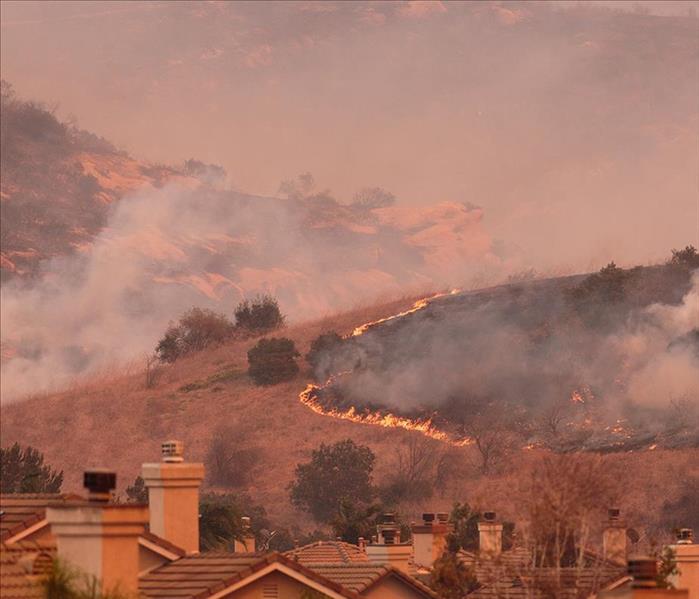 Preparing your home for a wildfire is important when wildfires are present nearby.
Preparing your home for a wildfire is important when wildfires are present nearby.
Wildfire Damage
Wildfires, brush fires and forest fires are all names for what is essentially the same thing. They have been around for thousands of years, but with climate change and human activity, they are becoming more common. In this article we will discuss the damages that wildfires can cause and how to prevent them from happening in your area.
Wildfire Damage to Your Home
In addition to the obvious risks of physical damage, wildfires can also cause structural damage to your home and emotional stress.
Wildfires can cause structural damage in a number of ways:
- Smoke or heat damage to your home that may require repairs and rebuilding.
- Water damage can occur when firefighting efforts use water from nearby sources (such as ponds, streams or lakes) to fight fires. Water used by firefighters could seep into cracks in the foundation or cause leaks aboveground like ceilings and walls which will need repairing.
Structural repairs are costly and time-consuming—and they're not limited just to homes; businesses may suffer significant losses too!
Protecting Your Home
Wildfire smoke can affect your home's indoor air quality. Smoke can cause damage to the structure of your home or cause a fire to start inside if it is exposed to heat and flames.
The best way to protect your home from wildfire damage is prevention. To protect against smoke and wildfire damage do the following:
- Keep your windows and doors closed.
- Make sure that the roof vents are clean, so they function properly when they need to.
- If possible, cover or remove items that may catch fire (trees near the house, gas meters, etc.).
- Install weather-stripping on windows and doors if you haven't already done so; this will help prevent air from leaking into your house during high winds or storms where there are wildfires nearby!
Wildfires can cause a lot of damage, including property and forest fires. They also have the potential to spread rapidly and affect other parts of the country. Wildfires are unpredictable, so it's important that we take steps now before they get out of control in your area.
Call SERVPRO of South Garland!
If you are in the area of a wildfire and need help, SERVPRO can help. We have qualified professionals on staff who will assess your situation and provide you with the necessary tools to get your home back to preloss condition.
Our team will assess the damage, remove debris and damaged materials, decontaminate affected areas, and perform other tasks necessary to restore your property as quickly as possible. We know this is not an easy time for you, but we're here for you every step of the way!
When a wildfire has caused damage to your Garland, TX home or business, the last thing you want to do is try to deal with it on your own. A professional company like SERVPRO of South Garland will respond quickly and assess the damages at no cost to you. We are experts in restoration and repair and can take care of any tasks necessary to get your property back up and running as best as possible.
Is a Flooded Basement Covered by Insurance?
11/9/2022 (Permalink)
 Does insurance cover a flooded basement?
Does insurance cover a flooded basement?
Basement Flooding and Insurance Coverage
If a pipe bursts in your basement and floods your home, this is considered a water loss, which is covered by your homeowner’s insurance. However, if the pipes burst because of negligence or neglect on your part (like leaving a faucet running) then this might not be covered under most policies.
Basement flooding may also be covered if it was caused by an outside source like heavy rains or even certain types of natural disasters such as hurricanes or earthquakes.
Another thing to keep in mind when dealing with basement flooding: some damage isn't always obvious right away—and sometimes it can be very expensive to fix! For example, mold can develop after a flood has occurred—and this can cause serious issues for anyone living in that environment long-term.
What Can Be Done to Prevent Basement Flooding?
There are several things you can do to keep the water out of your basement. One way is to install a backwater valve, which prevents floodwaters from backing up through your sewer lines into your basement during heavy rains or flooding. Another option is to install a sump pump in your basement floor, which will pump out any water that seeps in through cracks and crevices in the walls; this is especially helpful if you live near a river or lake and have experienced flooding before. A third option is updating any drains or pipes around your home, so they don't leak when there's heavy rain; it's also important to make sure that any drain covers are sealed properly so no water leaks out from underneath them.
What Should You Do If You're Not Covered?
If you have not been covered by your insurance company, or if you have and they will only cover a portion of the repair costs, it's time to call in the professionals.
You should start by contacting a flood restoration company to see what their services would cost and whether they can help with any other parts of your home that may have been damaged during this event.
It's important to note here that while there are companies out there willing to take on water damage jobs at low rates, these contractors may not be licensed or insured professionals who can deliver quality results. You want someone who has extensive experience dealing with different types of insurance claims after major floods as well as experience restoring properties affected by such events, such as SERVPRO of South Garland.
A flood in your basement is bad news, but an insurance policy could save you.
A flooded basement is not just a pain in the neck, it’s also expensive. In addition to all your belongings being destroyed and damaged, you have to pay to have them cleaned and dried out—not to mention pay for repairs on any items that aren’t covered by insurance.
But what happens if your home insurance policy doesn’t cover water damage? Luckily, most policies do offer coverage for flood damages when certain conditions are met. That said, if you want to make sure that your home is protected against any potential flooding incidents going forward then you should consider purchasing additional coverage through a rider or floater policy.
The best way to learn whether your basement flooding was caused by an act of nature or someone else is by talking with an insurance agent or restoration professional who can help guide you through the process.
If the thought of a flooded basement makes you nervous, don’t worry—there are some steps you can take to mitigate the risk. A good first step is to contact your insurance company and ask about flood coverage in case of basement flooding. If they don’t cover this type of loss, see if they have any other suggestions for how to protect your home from water damage during a storm. For example, homeowners can purchase flood insurance through FEMA or their local municipality which will provide them with protection against future flooding events.
What Are Soot Webs?
10/12/2022 (Permalink)
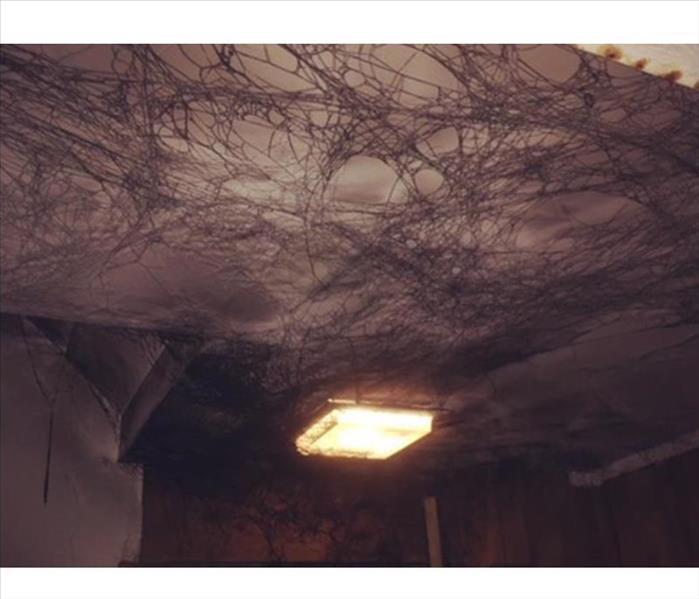 Soot webs are the most common type of web you’ll see after a fire.
Soot webs are the most common type of web you’ll see after a fire.
Have You Heard Of the Term Soot Webs?
Have you recently suffered from a fire in your Garland, TX, home and discovered a black-looking cobweb? This article will teach you what soot webs are and how they come to be.
Soot webs are thin strands of soot that can cover the ceiling after a fire.
Soot webs are thin strands of soot that can cover the ceiling after a fire. Soot is a byproduct of burning and collecting on ceilings, walls, and other surfaces. The consistency and color of soot webs depend on how long it has been since the fire occurred, as well as what materials were burned in the fire.
They look like regular cobwebs, but they're not made from spider silk. If you see anything that looks like cobwebs on your ceiling after a fire, it's probably a soot web.
Soot webs can have different names.
Soot webs are also known as “smoke webs,” or just “webs.” These names are not specific to soot webbing but can refer to any type of fire damage that has occurred in your home.
How do soot webs form?
Soot webs are created by soot particles that have been suspended in the air. Soot particles are lighter than smoke particles, which means they stay suspended longer above a fire source. When they do fall, they stick to surfaces inside your home or business.
The best way to avoid soot webs is to prevent fires from starting in the first place!
Soot webs look like regular cobwebs, but the two are different.
Soot webs are not sticky, which means you can walk through them and not get stuck. They do not have the same structure as regular cobwebs, nor do they serve the same purpose. They are also not made by spiders or insects, nor are they made of dust or debris. They're actually an accumulation of soot particles in your home's ventilation system—something that can be caused by burning candles indoors or any other activity that produces smoke and ash.
If you see anything that looks like cobwebs on your ceiling after a fire, they're probably soot webs. Soot webs are not made of silk-like regular cobwebs and can be mistaken for them. If you look closely at the edges of your soot web, it will be rough and grainy, not smooth as silk. Cobwebs are usually found in corners, while soot webs tend to hang down from above (often from light fixtures). Regular spiders do produce silk but only use it for wrapping insects; they don't build webs out of it.
Soot webs are the most common type of web you’ll see after a fire. They look like regular cobwebs, but they’re different. The best way to tell them apart is by looking closely at the strands: soot webs have a smooth, glossy appearance, while spider webs have tiny hairs on each strand. You can also tell them apart by their color—soot webs are gray or black, while spider webs are often white or cream-colored.
How SERVPRO Can Help With Your Business Property Restoration Claim
8/27/2022 (Permalink)
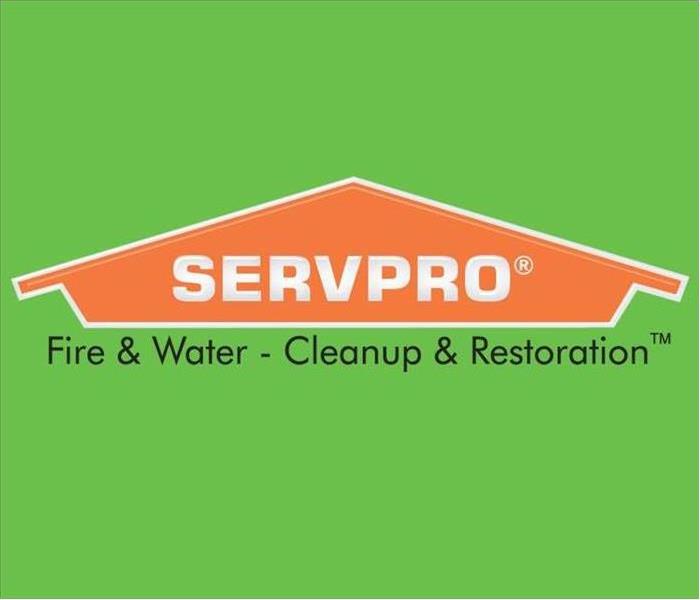 Your restoration team may also be able to create progress reports and regularly update them.
Your restoration team may also be able to create progress reports and regularly update them.
How SERVPRO Can Aid with Business Property Restoration Claims
After a flood or fire at your Garland, TX, business you may want to contact your local SERVPRO restoration team. In addition to fast emergency response, and their ability to help with cleanup and repairs, these professionals may provide a variety of claim services that could help your insurance agent at their process your claim. Here’s what you may want to know.
1. Document Damages
A restoration crew can document the damages they find as they assess the property. This can save a lot of time, as well as allow the team to keep track of what areas need repairs. Once the assessment is complete they can let you and your agent know exactly what type of repairs they may need to make, if there are secondary damages, and what company items may be affected as well. With this knowledge, an estimate can be given to your agent at the beginning of the process which can give them a head start on filing the claim.
2. Electronic Database
Another one of the claim services SERVPRO of South Garland offers is the use of an electronic database. This can store documentation and lists of damages, as well as photographs of the space, and progress reports. The database can also be accessed remotely which can give your insurance agent access to the information they may need from their own office.
3. Progress Reports
Your restoration team may also be able to create progress reports and regularly update them. This way you and your agent should be able to stay abreast of the progress being made on the repairs without having to play phone tag or trying to track down a representative while they are in the middle of repairing the space.
The variety of claim services your local SERVPRO may provide include things such as their ability to document the damages that have occurred to your business property and create an electronic database of this information. They should also be able to update regular progress reports so that your and your insurance agent can stay up-to-date with the repairs as they are completed.
3 Tips To Prepare Your Workplace for a Fire
8/27/2022 (Permalink)
 Biannual training on emergency evacuation is suggested for all businesses.
Biannual training on emergency evacuation is suggested for all businesses.
Prepare Your Workplace For A Fire
The success of your South Garland, TX, business requires a great deal of planning, organization and creativity. In addition to daily operations, it’s essential to make your workplace ready for emergency situations. The National Fire Protection Association (NFPA) reported an average of over 3,000 fires in office buildings during the years of 2007-2001. Therefore, it’s critical that businesses actively develop a contingency plan. Here are three tips that can help you prepare your workplace for a fire.
1. Develop an Evacuation Plan
The size and complexity of your business determine the details of your office emergency action plan. Smaller offices that have fewer hazards can create a simple plan. The NFPA states that the most common causes of workplace fires are cooking, electrical and heating equipment. Less common causes include intentional fires and smoking materials. Establish an emergency response team to identify hazards and draft an emergency action plan. The plan should include evacuation procedures and routes that are specific to the office location.
2. Train Employees
A well-drafted contingency plan is useless without employee training. All employees need to be trained on the specifics of the plan. Employees should know about potential hazards and what action to take before, during and after a fire. Employees should also be able to recognize alarm systems and know where fire extinguishers and fire sprinkler systems are located.
3. Review and Practice the Plan
Biannual training on emergency evacuation is suggested for all businesses. Additionally, new employees should be trained within the first few weeks of employment. Workers should understand all aspects of the plan including the types of possible emergencies, evacuation routes, alarm systems, reporting procedures and individual responsibilities. Assign individuals on the emergency response team to be responsible for reporting to emergency personnel and working with emergency restoration professionals.
Creating and practicing a contingency plan is critical to prepare your workplace for a fire. With proper planning and training, your employees will be prepared for an emergency.
How To Protect Your Business From Rain Damage
8/12/2022 (Permalink)
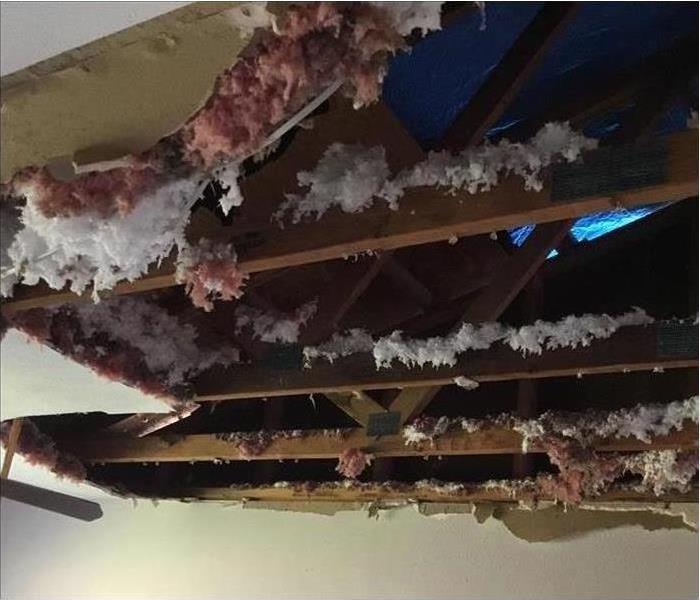 Collapsed ceiling from roof destruction in Waterford Estates, TX.
Collapsed ceiling from roof destruction in Waterford Estates, TX.
Prevent Rain Damage To Your Business
Rain damage to your Waterford Estates, TX, business can be a major problem but is often preventable. By maintaining the structural integrity of your building’s exterior, you can minimize potential damage from rain and storms.
Prevention
When it comes to protecting your commercial building from storm damage, routine maintenance is key. Keeping the structure in good repair prevents weak spots that are vulnerable to strong winds and heavy rains. All buildings have an envelope, the barrier between the inside and outdoors. The building envelope has several components, including:
- Roof
- Foundation
- Walls
- Windows
- Doors
- Seals
Have the entire building envelope inspected at least once a year and address any problems quickly. Your contractor can let you know if you need more frequent inspections.
In addition to structural issues, be sure to watch out for landscaping dangers as well. Keep limbs trimmed and make sure sick or weak trees are cleared from the property.
Cleanup
Even properly maintained buildings can suffer storm and rain damage. Fortunately, quick action can prevent further problems. If water inundates your building, the first step after ensuring everyone is safe is removing the standing water and remaining moisture. If possible, dry the property out within 24 hours to prevent black mold and other fungal growth.
After the property is dry, it should be thoroughly cleaned. Flood water often harbors bacteria and other contaminants that can linger even after the water has been removed. A certified restoration service has the knowledge to select the best cleaning product and technique for every affected item and let you know which items should be replaced rather than restored. After everything is dry and sanitized, damaged items can be repaired.
The weather at your business site may be unpleasant or unpredictable, but there are ways you can protect your commercial property from storm and rain damage. Perform routine inspections, keep the building envelope in good repair and clean up any water damage as soon as possible to prevent mold growth.
What You Should Know About Fire Restoration for Your Home
7/29/2022 (Permalink)
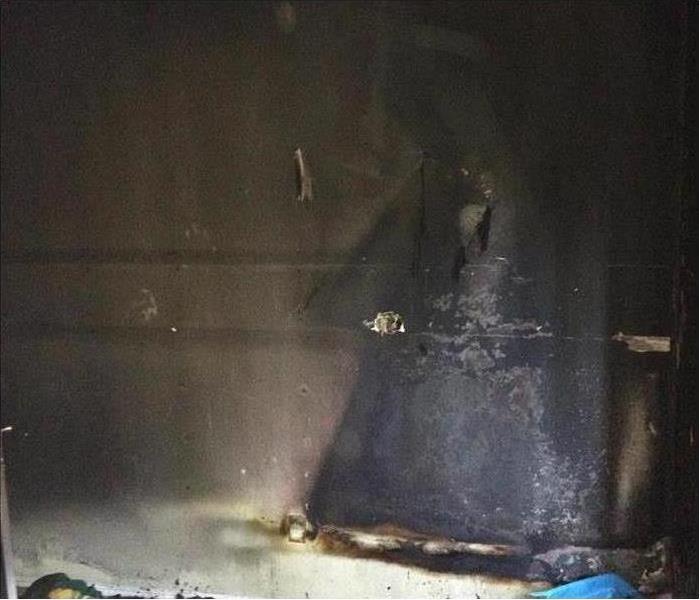 Fire damage in Duck Creek, TX
Fire damage in Duck Creek, TX
As a responsible homeowner, you have invested in the upkeep and protection of your house. After all, your home is not only where you live, but it’s also a major investment. One of the biggest responsibilities is securing sufficient property insurance to protect against damages and losses, including fire damage. If you ever experience a fire to your home in Duck Creek, TX, you need to be aware of the fire restoration process which addresses all cleanup, including smoke damage.What is the Fire Cleanup Process?
After all blazes have been completely extinguished, you should first contact a professional fire restoration company to return your home to pre-fire conditions:
- Inspection and investigation to determine the extent of the fire and the associated cleanup
- Securing compromised parts of your structure, such as missing windows, damaged roofs etc.
- Removal and drying any remaining water damage and moisture
- Cleanup of smoke damage or soot damage using smoke cleaning techniques
- Sanitization and cleanup of other items, including odor removal
- Other repairs necessary to restore your home to pre-damage conditions
Fire restoration is a multi-step process that takes into account the full damage to your home and its contents. It requires special knowledge and equipment to fully clean your home.
Do I Really Need To Hire Professionals?
Full restoration of your home to its pre-fire conditions accounts for more than just fire, water and smoke damage. A professional provider is qualified to complete structural repairs, carpet installation and other work required. Such a provider is a one-stop solution for full assessment and repair. They also emphasize repairing and rebuilding damaged items over replacing which can lower the overall cost. These pros know the best ways to clean your home safely and as quickly as possible. Many insurance providers will advise you to work with a professional restoration services to ensure that the work is correct and complete.
The Pros and Cons of Flood Insurance
7/19/2022 (Permalink)
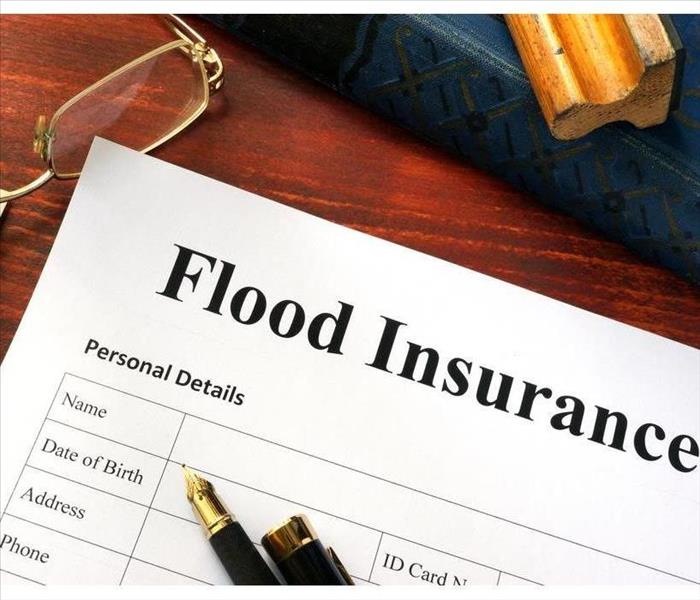 It is important to purchase flood insurance for your business.
It is important to purchase flood insurance for your business.
For many companies, the decision on whether or not to buy flood insurance is a difficult one. After all, most companies have a strong commercial insurance policy that covers many perils. In most cases, though, damage from a flood will not be covered by the regular policy. For insurance purposes, a flood is described by FEMA as a "temporary condition of partial or complete inundation of 2 or more acres of normally dry land area or of 2 or more properties..." In some situations, the decision of buying flood insurance is made for business owners. If the owner has a federally insured mortgage and the property is situated in a flood plain, a flood policy is mandatory.
The Pros of Flood Insurance
Most business owners purchase insurance for floods from the National Flood Insurance Program. This federal program provides payments for floods in South Garland, TX, and elsewhere in the U.S. It provides the following benefits to policyholders:
- Peace of mind
- Payments of up to $500,000 for structures
- Payments of up to $500,000 for belongings
- Prospects of faster recoveries for businesses
- Transfer of some of the risks to the government
Even in years without a damaging flood, the NFIP allows business owners to better plan expenses. By reducing uncertainty, a company might not need to set aside large amounts of discretionary funds.
The Cons of Flood Insurance
Some business owners might feel that paying for commercial insurance and flood insurance is too expensive. They might also feel that the payment limits on federal flood insurance are too low. In any event, floods across the U.S. can often be devastating. They also often require the services of a professional storm mitigation company. A fast response by experienced professionals can limit damage to a building and its belongings. Vigorous action by trained technicians is another way a company can quickly rebound from the expenses associated with storms.
5 Tips to Prevent Water Damage in Your Home
7/12/2022 (Permalink)
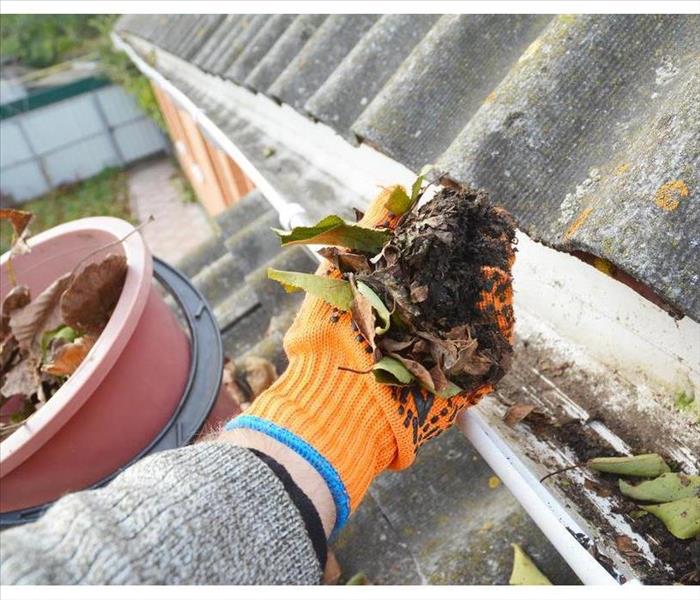 Clean out your roof gutters
Clean out your roof gutters
Five Easy Tips for Preventing a Flood In Your Home
SERVPRO of South Garland is always there for you when there is a water loss in your home, but do you know what is easier and much less of a headache?
Well, the answer is preventing the water from leaking in the first place. Here are 5 easy tips for preventing a flood in your home.
1. Never pour Grease down your drain
I am sure you have heard this before, but some people still will tell you that it is safe if you flush it with hot water, or mix dish soap with it. While that may eliminate some of the risk greases may still stick to the pipes eventually causing significant damage or a blockage. The safest thing you can do is pour your grease into an old can and let it harden in the refrigerator. Then you can just toss it into the trash it is easy and no worries in the pipes.
2. Do not use unclogging chemicals use a Drain Snake instead.
No matter how clean you are, the fact remains that hair and other debris will get into your drains and will cause blockages. This drives most people to grab a drain cleaning chemical, but what most people do not realize is how much these chemicals eat away at your plumbing and can cause leaking drains. so an alternative is a drain snake that is relatively inexpensive at a local hard wear store. This will eat up most all clogs and will be safer for your pipes than drain cleaning chemicals.
3. Watch where you plant
Some plants and trees, like weeping willows, have pretty invasive roots. If you’re not careful, they’ll grow right into your sprinkler system, drainage field, pipes, and septic tanks. Plan before you plant to keep roots away from any water lines.
4. Clean Out Roof Gutters
You know it’s on your to-do list anyway, so if you can, take a safe climb up to your roof next Sunday and check out your gutters. If you’re seeing lots of leaves, birds’ nests, sticks, and whatnot up there, your gutters may not be doing the job you hired them for. And on a rainy day, a clogged gutter can send water spilling into your home’s foundation, through the roof, or down to your basement. That could cause some serious water damage! So next time you’re doing some seasonal cleaning, make sure those gutters are clean. And if your gutters are too high, be safe and get a professional to check them.
5. Keep an Eye on Your Water Bill
With so many water pipes hidden behind walls and on the floors in your house, you might not know there’s a leak until the damage is done. That’s why it’s a good idea to keep a close eye on your monthly water bill. If you see it starting to creep up or get one that’s uncommonly high, it’s a pretty good sign that you may have a leak somewhere.
3 Types of Commercial Water Damage
6/25/2022 (Permalink)
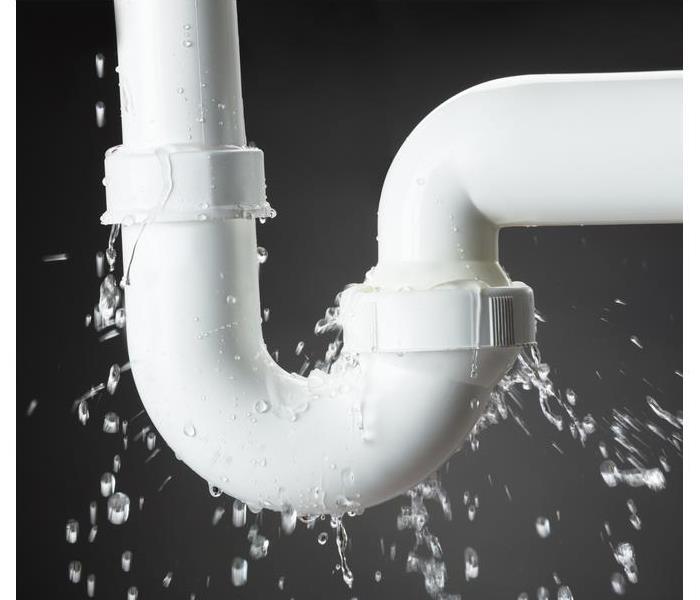 Leaking pipes can cause serious damage to your building.
Leaking pipes can cause serious damage to your building.
Three Types of Commercial Water Damage
Your Towngate, TX, business is probably your greatest investment, and taking steps to protect it from water damage is one way to protect your bottom line. Damaged pipes, hidden leaks and floods from defective plumbing can all seriously harm your business and even cause a work stoppage. Learning the most common kinds of water damage can help you safeguard your building and prevent costly insurance claim premiums and lost sales.
1. Leaking Pipes
If your building has old or damaged pipes, then you may be headed for a water disaster. Fortunately, some pipes warn you of an impending failure by the presence of leaks. You can check for leaks in the plumbing behind cabinets, in basement pipes and in water lines in appliances in your breakroom or cafeteria. The better you maintain these pipes and fix leaks when they appear, the lesser the chance of eventual break that can cause serious damage.
2. Indoor Floods
Even small indoor floods can cause damage to building materials, such as drywall and wood paneling or flooring, which can also be costly to replace. Waterline breaks and overflowing toilets are usually the most common types of indoor flooding, so you may want to inspect your plumbing and indoor lines at least once a month and have your toilets serviced annually to prevent floods caused by poor or damaged plumbing.
3. Seasonal Plumbing Problems
Sometimes, winter weather and freezing temperatures can result in damaged pipes, which may weaken with temperature changes and then eventually burst. This can cause serious floods inside your building that will probably require the assistance of water restoration and cleanup company. Calling for help right away after this kind of problem may minimize the overall damage.
Water damage at your Towngate, TX, business can cost you time, profits and cause a work stoppage. Remaining aware of the condition of your building's plumbing system and what can cause a water loss may help you protect your company.




 24/7 Emergency Service
24/7 Emergency Service









